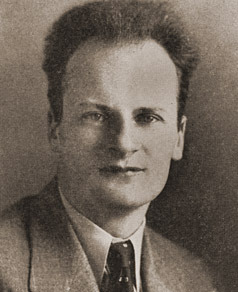Hans Bethe

Hans Albrecht Bethe (German: [ˈhans ˈalbʁɛçt ˈbeːtə]; July 2, 1906 – March 6, 2005) was a German and American nuclear physicist who, in addition to making important contributions to astrophysics, quantum electrodynamics and solid-state physics, won the 1967 Nobel Prize in Physics for his work on the theory of stellar nucleosynthesis.
For most of his career, Bethe was a professor at Cornell University. During World War II, he was head of the Theoretical Division at the secret Los Alamos laboratory which developed the first atomic bombs. There he played a key role in calculating the critical mass of the weapons and developing the theory behind the implosion method used in both the Trinity test and the "Fat Man" weapon dropped on Nagasaki in August 1945.
After the war, Bethe also played an important role in the development of the hydrogen bomb, though he had originally joined the project with the hope of proving it could not be made. Bethe later campaigned with Albert Einstein and the Emergency Committee of Atomic Scientists against nuclear testing and the nuclear arms race. He helped persuade the Kennedy and Nixon administrations to sign, respectively, the 1963 Partial Nuclear Test Ban Treaty and 1972 Anti-Ballistic Missile Treaty (SALT I). His scientific research never ceased and he was publishing papers well into his nineties, making him one of the few scientists to have published at least one major paper in his field during every decade of his career – which, in Bethe's case, spanned nearly seventy years. Freeman Dyson, once one of his students, called him the "supreme problem-solver of the 20th century".
Bethe received numerous honors and awards in his lifetimes and afterwards. He became a Fellow of the American Academy of Arts and Sciences in 1947, and that year was received the National Academy of Sciences's Henry Draper Medal. He was awarded the Max Planck Medal in 1955, the Franklin Medal in 1959, the Royal Astronomical Society's Eddington Medal and the United States Atomic Energy Commission's Enrico Fermi Award in 1961, the Rumford Prize in 1963, the Nobel Prize in Physics in 1967, the National Medal of Science in 1975, Oersted Medal in 1993, the Bruce Medal in 2001, and the Benjamin Franklin Medal for Distinguished Achievement in the Sciences by the American Philosophical Society posthumously in 2005.
Cornell named the third of five new residential colleges, each of which is named after a distinguished former member of the Cornell faculty, Hans Bethe House after him, as was the Hans Bethe Center, 322 4th St. NE, Washington, DC, home to the Council for a Livable World, where Bethe was a longtime board member, and the Bethe Center for Theoretical Physics at University of Bonn in Germany. He also has an asteroid, 30828 Bethe, that was discovered in 1990 named after him, as was the American Physical Society's Hans Bethe Prize.
On his religious views, Bethe was an atheist. Professor Bethe was a man of profound integrity and humility who made outstanding contributions beyond his own discipline in a constant effort to influence public policy for the greater good. He was instrumental in changing the public perception of the role of science and scientists in relation to society. He was famous for his optimistic phrase: “I can do that” when faced with adversity or a critical unsolved problem. His unwavering loyalty to Cornell and its students, his integrity and humility, as well as his profound intellectual accomplishments made him one of the most revered members of the Cornell faculty.
More: http://www.nobelprize.org/nobel_prize...
http://www.nobelprize.org/nobel_prize...
http://bethe.cornell.edu/about.html
http://bethe.cornell.edu/
http://www.britannica.com/EBchecked/t...
http://hansbethehouse.cornell.edu/who...
